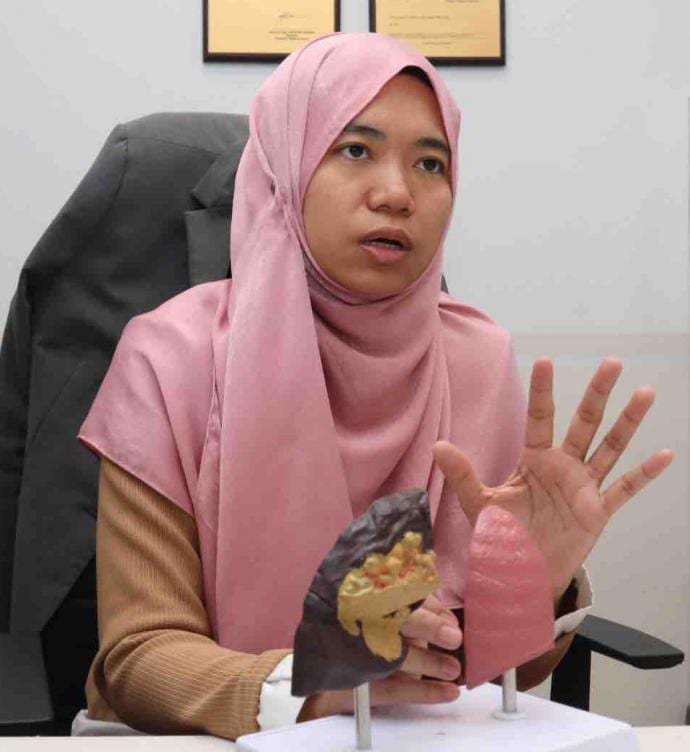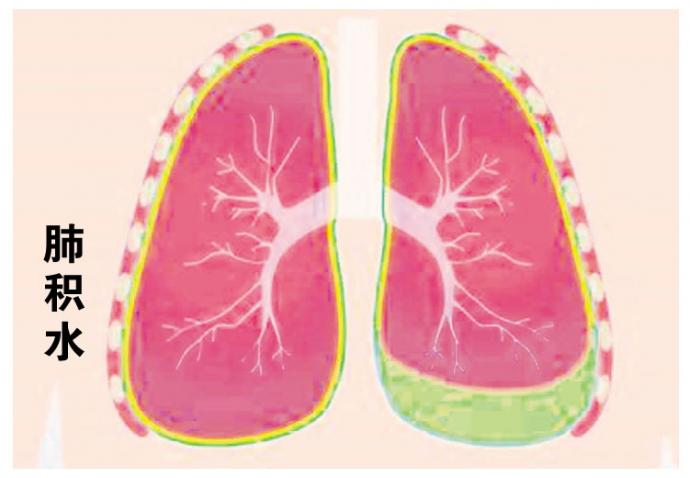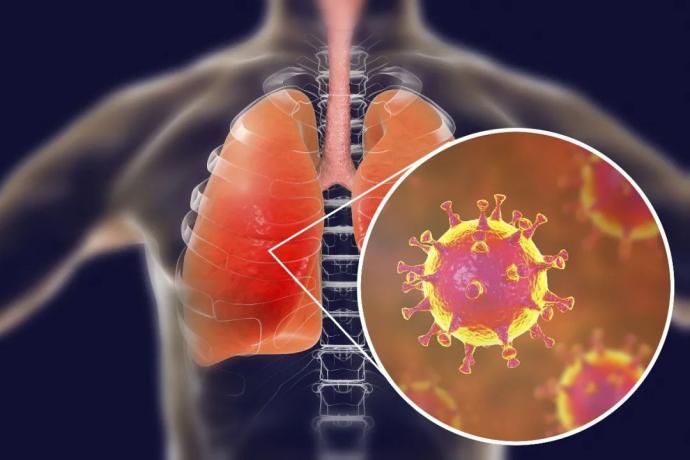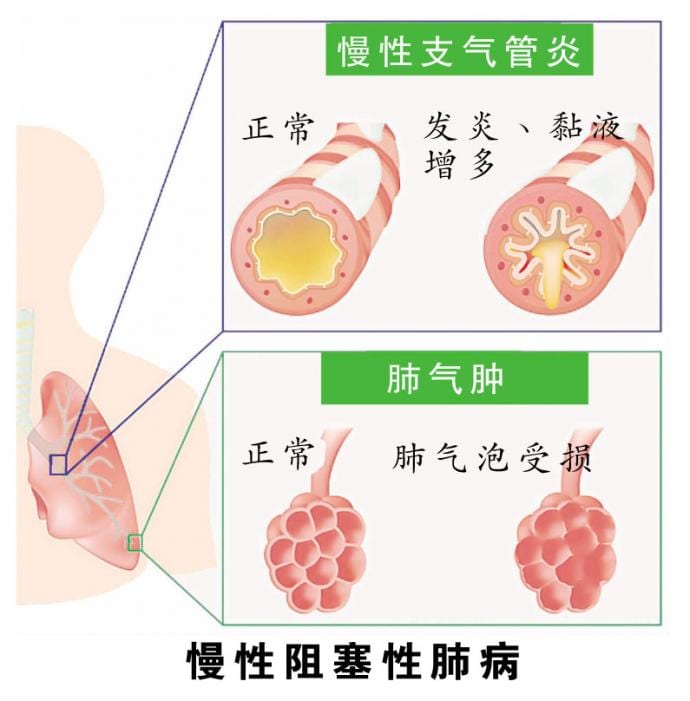Below is an English translated version of an article originally published in Nanyang Siang Pau online (https://www.enanyang.my/) in Chinese on 22-11-2020.
Original title: Is the “lung” of the elderly necessarily weak?” (translation)

Lung Health and Lung Infections in the Elderly in Malaysia
Clinically, more than 50% of the elderly have passed away due to various causes of lung infection and weakened lung function. Older lungs, are they particularly vulnerable to infection? Once an elderly person has a lung infection, is it bound to die? Why are the lungs of the elderly so weak? There are elders in the family, how should they care for their lungs?
Dr. Nurul Yaqeen Mohd Esa, Specialist in Respiratory Medicine, Malaysia, said that “elderly lungs are weak and susceptible to infection” and pointed out that the function of the human immune system will decline with age, which is physiological natural aging. The facts, but we can’t assume that “the elderly’s lungs must be very weak” and so on.
Complications cause death
She said that in fact, the age group with the highest morbidity and mortality rates from lung infection data is the elderly over 65 years old and children under 4 years old. The former is due to weakened resistance and the latter is due to the immune system. It is not mature enough and has insufficient resistance, so the death rate of pneumonia in these two age groups is slightly higher than that in other age groups.

“This is why the elderly are more susceptible to coronary disease, while elderly patients who also suffer from other chronic diseases and take long-term medication are more likely to cause serious complications and even death.”
She said frankly that compared with young people, elderly lung infections may cause serious complications (other organ failure) and a higher chance of dying, but they are not “nine deaths”. On the contrary, severe lung infections require intensive care. Critical cases treated in the ward accounted for only about 5%.
She further explained that the lung infection rate and death rate of the elderly mainly lies in the physical condition of the patients. Although some elderly people are not immune to the younger population, they are still in good health.
“Some elderly people also suffer from other chronic diseases and need to take long-term medications, such as pneumonia, cardiovascular disease, diabetes, pulmonary fibrosis, etc., and the risk of death from severe lung infections and complications is higher than that of healthy elderly people.”
4 types of infection
In any case, she said that the risk factors for infection, inflammation and disease mortality in the elderly are not caused by a single lung infection, but a combination of factors that lead to serious complications, especially acute pneumonia caused by severe infection.
She pointed out that there are four main types of lung infections, namely viral infections, bacterial infections, fungal infections and parasitic infections, and there are also less common drug-induced lung diseases (Drug-Induced Lung Disease).
“Infections are also divided into three levels-mild, moderate and severe infections. 80% of lung infections are between mild and moderate levels. Moderate infections are about 15%, and severe infections are the least, less than 5%. , This is also a higher level of mortality.”
There are different treatment procedures for different levels of infection, and there are five major determinants in evaluating the patient’s infection level and treatment plan, which are age, kidney function, level of consciousness, blood pressure and respiratory rate.
Pulmonary hydrops: cough is the initial symptom
Pulmonary effusion is medically called pleural effusion (Pleural Effusion), which refers to the accumulation of excessive water in the pleural cavity, forming pressure and oppressing the lung tissues, causing breathing difficulties, long-term development will lead to lung atrophy and fluid accumulation infection.
Nuruyaqin said that from the outer layer of the lungs to the lung tissue, there will be water accumulation, that is, alveolar water and lung tissue water. There are two main conditions for pulmonary hydrops, one is pleural effusion, the other is pulmonary edema (Pulmonary Edema), the two are different, but the symptoms are similar.
“Pleural effusion is caused by a combination of four major organs or parts, namely kidney, heart, liver, and lung problems. The first symptom is acute dyspnea or advanced type of breathlessness (dyspnea conditions change over time. Worsened), followed by coughing.”
Coughing is the initial symptom of acute pulmonary hydrops, especially the symptoms of coughing in the middle of the night and being unable to lie down, which are often mistaken for tracheal inflammation or colds and are taken seriously. Clinically, dyspnea, shortness of breath, paroxysmal nocturnal dyspnea, sitting breathing, even having to sit and sleep, etc. are all symptoms of pulmonary hydrops.
Other symptoms include fever and chest pain. If the lungs are fluid due to heart disease, these symptoms may not appear, but symptoms such as swollen feet, drowsiness, and back pain may occur.

More than 3 days or bacterial infection
She further explained that usually a cough can recover within two or three days. If it exceeds 3 days, it may be a bacterial infection and requires antibiotic treatment. If you have a high fever, you must go to the hospital for treatment. “If you can go to the hospital for more than 2, 3 weeks or even 2, 3 months, you must go to the hospital to diagnose the cause and treat it as soon as possible. If the cough is bloody, it is not to be ignored or delayed.”
Pulmonary hydrops is common in the elderly, mainly due to the combined effects of heart failure, malnutrition, lung infections and other diseases. In particular, many elders regard symptoms as colds and delay diagnosis and treatment, which can easily lead to lung infections and pneumonia, and then lead to Pulmonary water accumulates and even worsens to organ failure and death.
She pointed out that pulmonary hydrops is not caused by a single factor. There are at least 50 causes known so far, most of which are lung infections, pneumonia and other lung diseases (lung cancer, tuberculosis).
“Once you are infected, it will cause inflammation. The process from infection to inflammation will cause fluid to accumulate around the lungs if it is not handled properly. Not all pneumonia will turn into pulmonary hydrops. The main reason is that there is no correct and good treatment. It will get worse.”

Late at diagnosis
In addition, my country’s data on diabetes, cardiovascular disease, high blood pressure, hyperlipidemia, etc. are very high. With aging and decreased immunity, coupled with failure to properly control blood sugar and manage the disease, the probability of complications is higher than the average person.
“Heart disease, liver cancer, end-stage renal disease, etc., can all cause pulmonary hydrops. Once such patients are infected, they are often in a serious or critical state when they are sent to hospital. Even if powerful antibiotics are used in time, the infection may have spread. To other parts or organs, such as kidney failure, heart failure, liver failure, multiple organ failure and other serious or acute complications, death in a short time.”
She emphasized that the prerequisite for treating pulmonary hydrops is to confirm the cause. If it is lung infection, it is usually treated with antibiotics; if it is lung cancer, it must be treated in stages, and advanced lung cancer must be treated with chemotherapy; if it is caused by heart disease, a cardiologist is required to participate in the treatment to remove lung fluid; if it is liver and kidney problems, it is also Need related specialist intervention.
She said that most lung cancers are already at an advanced stage at the time of diagnosis, so the pulmonary hydrops caused by lung cancer are often in critical condition. If pneumonia causes hydrops in the lungs, even serious infections can still be treated with correct treatment.
Pay attention to health
Research data in the United States shows that 10% to 15% of the elderly have pneumonia, and the rate of pneumonia in children is also very high; but backward countries and developing countries (including Malaysia), there is still no research on elderly pneumonia and pulmonary hydrops. data.
According to Dr. Nurul Yaqeen’s experience and observations, Chinese elderly people pay more attention to health and health than Malays and Indians in terms of exercise, work and rest, diet, and life. Many elderly people aged 60 to 80 are still active and inactive. After retirement, some centenarians are also living healthily, which is believed to be related to traditional culture that emphasizes diet and life, such as daily medicated meals and practicing Qigong.
Main classifications of lung diseases
Dr. Nurul Yaqeen said that environmental pollution, population aging, smoking, family inheritance, unhealthy living and eating habits and other factors are all depleting the human lungs for a long time. It starts when the body’s functions are aging and immunity is weakened. Diseases, once the lungs are infected and inflamed, these chronic lung diseases will be complicated.

1. Chronic obstructive pulmonary disease (COPD) accelerates aging and affects the respiratory system.
Chronic obstructive pulmonary disease is an advanced lung disease, ranging from chronic inflammation of the respiratory tract to continuous deterioration to dyspnea and severe pulmonary fibrosis, mainly chronic bronchus There are two kinds of inflammation and emphysema.
Millions of people worldwide die of chronic obstructive pulmonary disease each year. The main reason is that smoking groups, especially men who smoke for a long time, will develop nicotine accumulated in the lungs after the body functions and the immune system weaken as they age.
Other risk factors for chronic lung obstruction include indoor and outdoor air pollution, workplaces polluted by dust, smoke, and chemicals for a long time, and frequent lower respiratory tract infections during childhood, usually with obvious symptoms after 40 to 50 years of age.
2. Asthma is induced by a variety of cellular causes.
Although many asthma diseases occur in childhood and young age, some patients who do not develop disease until old age have even more impact. This type of chronic respiratory inflammation induced by a variety of cells (especially mast cells, eosinophils, and T lymphocytes) can cause recurrent symptoms of wheezing, shortness of breath, chest tightness, and coughing.
3. Tracheitis, bronchitis caused by bacterial or viral infections.
Inflammatory changes in the trachea and bronchial mucosa caused by infection or non-infectious factors, resulting in increased mucus secretion, causing symptoms such as coughing or wheezing. Improper treatment will leave sequelae, which will lead to obstructive emphysema, impaired lung function, and serious condition.
Bronchitis is mostly caused by bacterial or viral infections. It is mainly divided into chronic and acute types. The former manifests as a long-term cough, while the acute symptoms are runny nose, fever, cough, sputum, etc., accompanied by hoarseness, sore throat, and mild Symptoms of friction pain behind the sternum.
4. Pneumonia embolism and obstruction lead to hypoxia.
The alveoli are affected by viral or bacterial infection and cause inflammation. Common symptoms include sputum production, chest pain, fever, and difficulty breathing. There are many types of bacteria that cause pneumonia. Infected and inflamed lungs will secrete fluid to expel dead cells. The embolism on the lung air sacs makes it difficult for the lungs to obtain oxygen and lack of oxygen, which affects the normal operation of other body functions.
5. The elderly with the highest incidence of lung cancer.
50 to 80 years old is the age group with the highest incidence of lung cancer. Long-term smoking or second-hand smoke and the risk group of smokers may have been affected by the age of 40 to 50. cancer. Although lung cancer has a younger trend, it is still a small number of cases.

6. Pulmonary fibrosis – smoking causes lung scarring.
Pulmonary fibrosis is an interstitial lung characterized by alveolar damage, excessive repair of alveolar epithelium, fibroblast proliferation, massive extracellular matrix deposition, and structural destruction of lung tissue caused by various reasons. disease. It is common in older people from 40 to 50 years old, especially men with a history of smoking.
Studies believe that aging can cause the lungs to react abnormally and harmfully to normal stress, which in turn leads to scarring of the lungs. In addition, long-term smoking, environmental factors, lung scars caused by chronic bronchitis, and past lung infections left scars, and gradually fibrosis with age.
Symptoms of pulmonary fibrosis are not obvious. Common reactions include shortness of breath, coughing, decreased energy after activity, etc. As the condition continues to deteriorate, blood oxygen levels will decrease, skin bruising (called cyanosis), thickened finger tips or clubbing The heart load will also cause the right ventricle to enlarge, which will eventually lead to right ventricular failure.
7. Tuberculosis (TB) can affect multiple organs.
Tuberculosis is a chronic respiratory infectious disease caused by Mycobacterium tuberculosis, which can affect multiple organs throughout the body, of which tuberculosis is the main one.


































